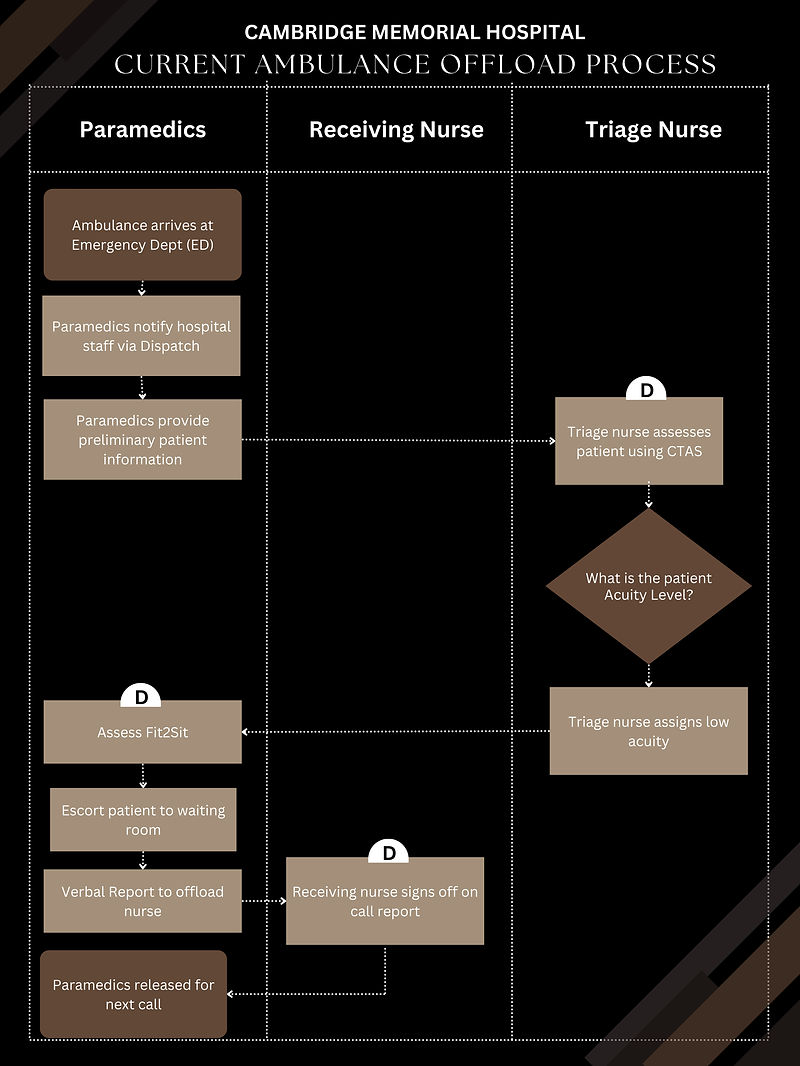PDSA

The Current Process
The current offloading process begins when an ambulance arrives at the emergency department and ends when patient care is fully transferred to hospital staff.
During this time, paramedics perform critical handover activities, including sharing patient information, completing necessary documentation, and, when appropriate, initiating the Fit2Sit program—a system designed to expedite the transfer of non-critical patients [4], [8].
Our process diagrams map each step of this transition, from ambulance arrival to the final release of the paramedic crew.
Despite having established protocols, variations in practice and communication gaps have introduced delays that are evident in the offload time metrics.
Offload Process in Context
This diagram provides a high-level overview of the ambulance process from the moment a call is received until the paramedic crew is cleared for the next emergency. It outlines key milestones, such as EMS dispatch, arrival on scene, and patient handover at the hospital. Each phase contributes to the total time on task, including response time, scene time, and in-hospital time[1].
Offload delays are defined as any offload time that exceeds 30 minutes [19]. By breaking down the steps, we can better pinpoint where offload delays typically occur and identify opportunities for interventions, such as improving Fit2Sit utilization, to expedite patient transfer and free up ambulance resources more quickly.
.png)
This diagram is a reproduction of the process originally outlined in the Region of Waterloo Paramedic Services Master Plan Update [1].